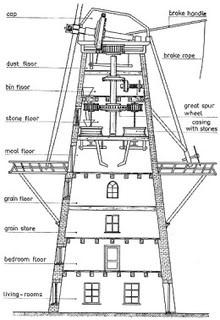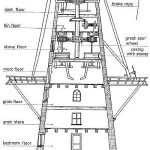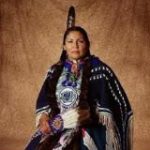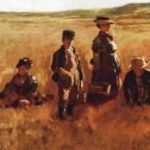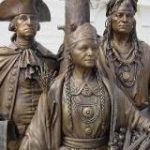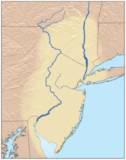First American Woman Inventor
Image: Sybilla Masters Corn Mill Invention
American colonist and inventor, Sybilla Masters is first mentioned in the records of the New Jersey colony in 1692. Not too long after that date, she married a Quaker merchant named Thomas Masters, and moved with him to Philadelphia. Thomas became a justice of the Pennsylvania Supreme Court in 1701, and served two terms as the Mayor of Philadelphia, in 1707 and 1708.
Sybilla, like most colonial women, had to work hard to care for her family and prepare their food. One of the common foods of the time was hominy. Hominy meal was made from ground-up Indian corn, sometimes called Hominy Grits. At that time, corn was ground between two large stones called millstones, which was hard work.
Sybilla watched Native American women pound the corn with large wooden posts, and then invented a mill that used hammers instead of grinding wheels to pound the corn into meal, and called the corn meal Tuscarora Rice. Sybilla’s innovation allowed the corn to be processed into many different food and cloth products.
This was not the end of her inventive ideas. Sybilla also worked with straw and palmetto leaves that came from the West Indies, and created a way to weave these leaves into hats and bonnets.
Trip to England
Sybilla wanted to patent her two inventions. At that time, having a patent was a very new idea. Some colonies granted patents, but Pennsylvania did not, and a colonial patent was not as good as a patent from England. Sybilla decided to travel to England to get her patents, and left Philadelphia in 1712. But when she reached London she learned that there was no regular procedure for obtaining a patent, and she finally applied to King George.
While Sybilla waited for her patent to be granted, she opened a store in London that made and sold the bonnets and hats using the method of her second patent. She also made chair covers of straw and palmetto, using the same process.
In 1715, after three years, King George granted a patent for the process of Cleaning and Curing the Indian Corn Growing in the several Colonies in America. Women at that time weren’t allowed to hold a patent, and King George granted Patent #401 to Thomas Masters for “a new invention found out by Sybilla, his wife.” This was the first patent issued by the king to a person from the American colonies.
In 1716, patent #403 was granted for the process for weaving straw into hats and other products, entitled “Working and Weaving in a New Method, Palmetto Chip and Straw for Hats and Bonnets and other Improvements of that Ware.” Sybilla finally had both patents. During this process, Sybilla was away from her husband and children for a very long time.
She returned home in 1716, and the patents were published in Philadelphia that same year. Thomas Masters built a mill using his wife’s methods to produce Tuscarora Rice, which was a great success. Sybilla had hoped to interest people in England in her product, but people in England didn’t much like the taste.
Sybilla Masters was a woman ahead of her time and far from typical. The Colonies were a man’s world. She wasn’t only the first American woman to receive a patent; she was also the last – until 1793, when America had its own patent office.
SOURCES
Sybilla Masters
Colonial Women Inventors
